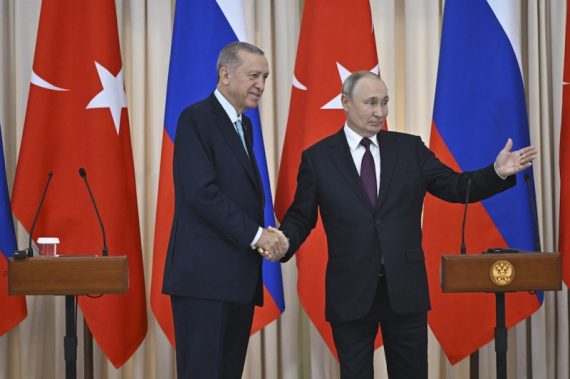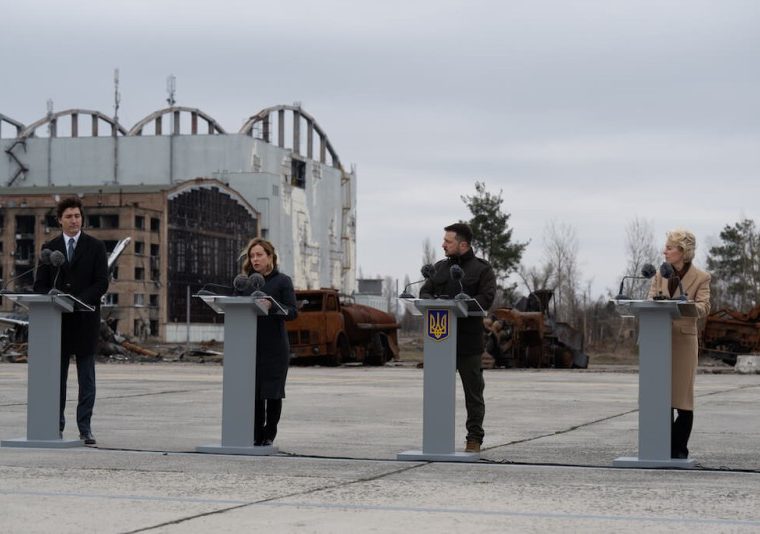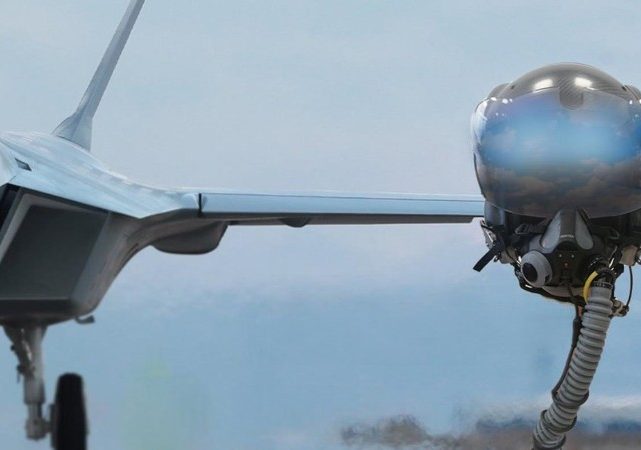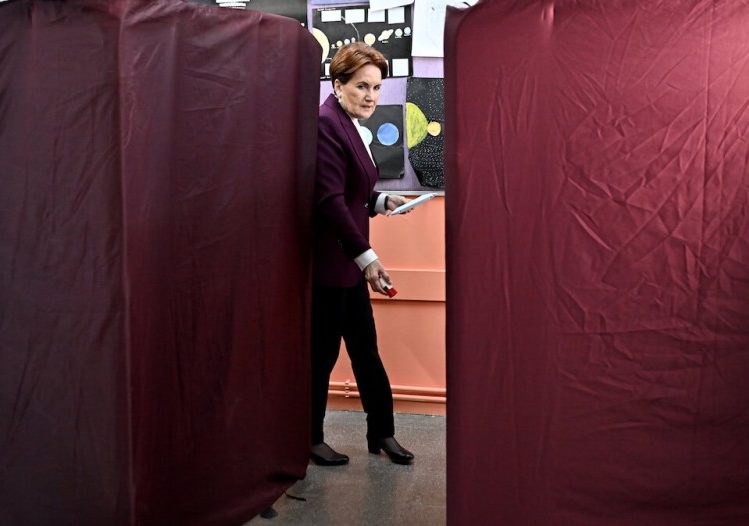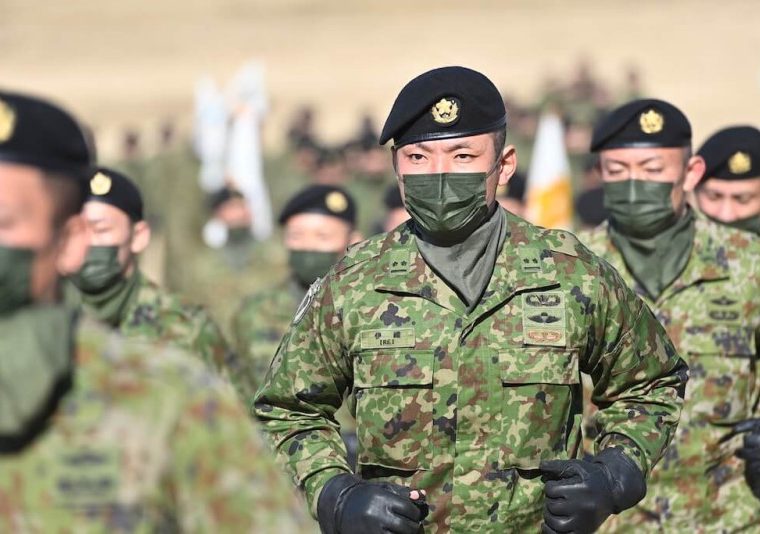A
s the Republic of Turkey leaves a century behind, it is impossible to fit the past, present, and future of relations between Turkey and Russia into this 100-year timeline. The nature of the relations between the parties is still dominated by the paradigm that the Russian tsar and first emperor Peter the Great established for his country at the beginning of the 18th century. In order to make sense of the current state and future of Turkish-Russian relations, it is necessary to embark on a journey that starts in the 18th century.
Tsarina Catherine’s “Eastern Project,” the naval Battle of Çeşme in 1770, the 1833 Treaty of Hünkâr İskelesi, the Crimean War of 1853-1856, the Ottoman-Russian War of 1877-1878, World War I and the Bolshevik Revolution, the Montreux Straits Convention and World War II, the First Cold War, the dissolution of the USSR and the Syrian civil war have all had a direct impact on the shaping of Turkish-Russian relations.
Turkish-Russian Relations as a Part of Global Geopolitical History
In order to make sense of why Turkish-Russian relations are often shaped around conflicts, it is necessary to take a close look at the maps of Asia and Europe during the reign of Peter the Great at the beginning of the 18th century. Aiming to transform the Tsardom of Russia into an empire, Tsar Peter I sought to dominate the sea trade routes.
Russia’s policy did not only consist of reaching the Mediterranean, the Indian Ocean, and the Red Sea. At the beginning of the 18th century, under these conditions, the Tsardom of Russia, which had no coasts on the high seas except the North Sea, had no way of increasing its trade and diversifying its economy.
Given the maritime technologies of the 18th century, it was not possible to build a global empire through the North Sea, which only allowed sailing for a limited period of the year. Peter I’s first goal was to open the Baltic Sea route and establish direct trade with Britain. To this end, first, he went to war with the Kingdom of Sweden, which completely dominated the Scandinavian Peninsula and the Baltic Sea.
Peter the Great did not achieve all of his goals, but the door to Russia’s imperial ambitions had been cracked open. This development, to which his successors remained indifferent for a while, gained momentum in the second half of the 18th century under Catherine the Great.
Unlike Peter I, Catherine the Great did not only use the army to expand her country’s borders—she also mobilized the Orthodox Church and Slavic nationalism. The 1770 naval battle of Çeşme, in which the Ottoman fleet was wiped off the battlefield, paved the way for Greek revolts in the Peloponnese.
The Russian Tsardom was now active wherever there were Orthodox churches, and Greeks and Slavs in the Ottoman lands. Having taken Crimea in 1792, the Russian Tsardom reached its natural borders by reaching the borders of today’s Georgia. It should be emphasized that at the same time, Russia had not yet penetrated the territories of the Turkish khanates in Central Asia.
From the 19th century onwards, the Russian Tsardom was to expand its sphere of influence in the West and the Middle East by using the factors of religion and ethnicity, while in the Caucasus and Central Asia it was to pursue a colonialist war policy with the support of Britain.
The Napoleonic Wars and the Changed Position of Russia in Europe
Two concurrent factors related to the rise of the Russian Tsardom must also be taken into account. First, the Tsarist dynasty was getting closer to the West by establishing kinship with monarchies in Europe. Second, this rapprochement strengthened Russia’s role during the French Revolution of 1789 and the Napoleonic Wars that followed.
Russia’s responsibility in the elimination of Napoleonic France made Moscow one of the leading global actors of the period. With the wind of this power, the Russian Tsardom began to support the separatist movements in the Ottoman territories more boldly and secured the independence of Greece in 1821, firmly establishing its foothold in the Mediterranean, the Aegean Sea, and the Balkans.
The growing instability within the Ottoman Empire was also closely monitored in St. Petersburg. The crisis caused by the abuse of the Ottoman military power, which had been crippled by the abolition of the Janissary corps in 1826, by Governor of Egypt Kavalalı Mehmet Ali Pasha gave the Russian Tsardom a historic opportunity.
The necessity to ask for help from European states to stop the revolt of Kavalalı Mehmet Ali Pasha against the capital paved the way for Russia to secure concessions over the Turkish Straits. With the 1829 Treaty of Edirne, the Danube Delta, Meskheti and Circassia were ceded to Russia. Meanwhile, in order to eliminate the advantages provided to the Russian Tsardom by the Treaties of Edirne and Hünkâr İskelesi, the European states sided with the Ottoman Empire in the Crimean War of 1853-1856.
At the end of the war, even though the Ottoman state was part of the victorious alliance, the Treaty of Paris signed in 1856 did not provide any advantage to the former. On the contrary, it gave France and Britain a greater say in the Danube River traffic and the Balkans, while a status quo was created in the Black Sea that would neutralize both the Russian and Ottoman navies.
After the Crimean War, Russia shifted its geopolitical goals to a different field. With the Great Game, which is assumed to have lasted from 1856 to 1914, the Russian Tsardom competed with Britain in the geographical direction of Iran-India-Central Asian Turkic States while sharing common colonial goals.
The British governments’ support for the Russian Tsardom’s colonial policy in Central Asia would undermine the Ottoman Empire’s relationship with Britain and pave the way for the Ottoman-Russian War of 1877-1878. In this war, the Ottoman state suffered the biggest territorial loss in its history.
In addition to being subjected to a wave of migration that turned the country’s economy and social structure upside down, the seeds of the antagonism that would become entrenched in the Turkish society against Russia and carry on into the 20th century were also sown.
The policies of the Russian Tsardom in the 19th century, both in Central Asia and in the Balkans and Anatolian periphery during the Ottoman-Russian War of 1877-1878, would also serve as a basis for the anticommunist propaganda and intelligence work of Nazi Germany during World War II and then the United States of America during the First Cold War.
As a result of the war, the Russian Tsardom was inserted into Eastern Anatolia and Rumelia, where it supported the final move that would completely separate the Balkan states from the Ottoman Empire. It was a natural consequence of this historical process that the Ottoman Empire’s participation in World War II began with the bombing of Russian ports on the Black Sea coast.
One of the most violent fronts of the war was in Eastern Anatolia and the Black Sea region, where the Ottoman and Russian armies faced each other. However, the October Revolution in 1917 not only changed the course of the Great War and world history, but also took the dynamics of Turkish-Russian relations to a whole new dimension.
The Last Century of Turkish-Russian Relations
Having first defeated the Western-backed Tsarist forces in their territories, the Bolsheviks moved on to Warsaw in 1920. If the Red Army won the Battle of Warsaw, there would be no obstacle to the revolution in Russia reaching Germany and Italy. However, the defeat and repulsion of the Red Army at the gates of Warsaw in August 1920 made the existence of the liberation movement in Anatolia critical for the new leadership in Moscow.
The Soviet leadership needed every ally it could find against the imperialist threat from the West, and the existence of a Turkish state that could block threats from both the Black Sea and the Caucasus was vital. The leaders of the Soviet revolution supported the Ankara government with arms and money. While this conjuncture-induced cooperation enabled the risks of the 1920s to be overcome, the parties also treaded cautiously against each other.
In an interview with Istanbul journalists at the Izmit Pavilion on January 16-17, 1923, Mustafa Kemal Atatürk gave the following answer to a question about relations with Russia: “Our official relations with Russia are favorable and amicable. However, there are many elements that detract from the sincerity of this friendship. Russians want to be friends with the Turks. But they want to be friends unconditionally. They want Turkey to be unconditionally subordinated to their policies and to walk in the direction that they will steer. Furthermore, they want the state organization and internal structure of the state to resemble the nature of their own organization. The present character of the Russians demands this.”
As can be seen, contrary to the dominant discourse in the popular historical narrative, even during the period when Turkish-Soviet relations were supposedly at their warmest, Ankara refrained from indulging in ungrounded optimism. Another conclusion to be drawn from Atatürk’s statements was the change in tactics of the USSR leadership.
The rhetoric of the Orthodox Church and Slavic identity that the old Russia had used to expand its sphere of influence had long since been replaced by communist propaganda. The tactics had changed, but the strategy remained the same.
Nevertheless, despite all the negative experiences of history, until the years when the winds of World War II intensified, the two sides pursued a mutual foreign policy in which they did not perceive each other as a primary threat. Turkey refrained from developing relations with third countries that could be perceived as a threat by the USSR, while the Soviet leadership set aside its former expectations, including territorial claims.
Montreux Convention and the Deteriorating Relations after World War II
This conjuncture lasted until the signing of the 1936 Montreux Convention. The convergence of Turkish and British views during the negotiations to determine the new status of the Turkish Straits sparked the first fuse in the change in the USSR’s approach towards Turkey.
Following the signing of the USSR-Germany Non-Aggression Pact in August 1939, Foreign Minister Şükrü Saraçoğlu’s visit to Moscow in September signaled that relations were heading towards an irreversible impasse. At the time of this visit, Poland was being occupied by German and Soviet armies.
The assistance pact, which was on the agenda during Saraçoğlu’s visit to Moscow, could not be signed due to the scope of Soviet demands, and the process that would set the standards in the relations of the First Cold War period began.
Stalin’s Soviet Union Breaks Ties with Turkey
As the end of World War II neared, in every platform where he met with the Allied leaders, especially at the Yalta Conference, Soviet leader Stalin tried to put Turkey on the same footing with Germany and Japan. Moreover, the Stalin administration, which was calculating how to seize Iranian oil and would support the establishment of the Republic of Mahabad, began to search for ways to create a Kurdish uprising in eastern Turkey.
As the new world order was taking shape with the end of the war in 1945, the Soviet leadership paved the way for the initiatives of minorities within the USSR regarding their territorial claims against Turkey. Although Stalin did not seem to embrace these initiatives, the origin of the first move was directly related to the Soviet leader’s origins.
On December 14, 1945, Georgian academics S. Canashia and N. Berdzenishvili’s articles that would poison Turkish-Russian relations for many years were published in the newspaper Kommunisti. The article was entitled “On Our Legitimate Demands from Turkey” and demanded “the Black Sea coastline from Batumi to Trabzon (including Trabzon).” First published in Georgian, on December 20, the article was also published in the newspapers Pravda, Izvestiya, and Krasnaya Zvezda, the newspapers of the party, government, and military organs of the Soviet administration respectively.
The demands did not stop there: on April 6, 1945, the letters sent to Stalin by the Armenian National Committee in New York containing territorial demands from Turkey were made public by the official Soviet news agency TASS. In this process, although no concrete evidence emerged as to whether the USSR demanded bases in the Straits from Turkey, the mere fact that this issue was raised at the allegation level determined Turkey’s side in the First Cold War. It was only with Stalin’s death that the territorial claims came to an end.

VIDEO: Russian Expansionism under Vladimir Putin
On May 30, 1953, USSR Foreign Minister Molotov presented a letter to the Turkish ambassador to Moscow, Faik Hozar, which was published in Pravda on July 19, 1953, announcing the abandonment of these demands. However, in the eight-year period when the territorial claims were brought to the agenda, Turkey had already taken its place in the Western camp, fought against the communist camp in Korea in the first hot conflict of the First Cold War, and become a member of NATO. In the years that followed, relations between Turkey and the USSR progressed around the terms of the Cold War.
Although Turkey was part of the Cuban Missile Crisis in 1962 due to the American Jupiter missiles it accepted on its territory, the USSR’s approach in those years was to convince Turkey at the very least to leave NATO and become a neutral country. In fact, the memoirs of Major General Celil Gürkan reveal that Nikita Semyonovich Rijov, the USSR ambassador to Ankara between 1957 and 1966, made an offer to the Turkish government through Cevdet Sunay, the chief of general staff, to explore for oil in Turkey and build a refinery free of charge.
The USSR’s only expectation in the face of this “favor” was Turkey’s neutrality. Despite the ups and downs in relations, the USSR’s support for Turkey’s industrialization from the 1930s until the first half of the 1970s was more than the administrations in Ankara could obtain from their Western allies.
The next breaking point in Turkish-Russian relations came after the collapse of the USSR in 1991. The First Chechen War in 1994-1996 and the struggle for influence in the Central Asian Turkic states were the events that redefined the balance between the parties. However, even these conflicts did not prevent the development of trade volume between the two. The Syrian civil war, which started in 2011, brought a new challenge to relations.
Following the involvement of the Russian military in the Syrian civil war in September 2015, the downing of a Russian Su-24 fighter jet in November of the same year for violating Turkish airspace caused relations between the two countries to remain on edge until the failed coup attempt on July 15, 2016. Having survived various attempts to sabotage relations, the two sides signed an agreement in 2017 for the sale of S-400 air defense systems.
In line with the agreement reached in 2010, the foundation work for the first reactor at the Akkuyu Nuclear Power Plant started in 2017. The volume of trade between Turkey and Russia reached $68.1 billion in 2022, almost three times the volume of trade between the U.S. and Turkey. In this sense, the deepening cooperation in the field of energy, centered on natural gas, bears significant similarities with the rapprochement between the USSR and Turkey on the economic platform in the 1960s.
Despite Turkey’s non-recognition of Russia’s annexation of Crimea in 2014 and disagreements over Syria, the areas of cooperation have diversified rather than narrowed. Meanwhile, the second and more violent phase of the Russian-Ukrainian war has placed new responsibilities on Turkey in terms of the security of the Black Sea region and the survival of the global supply chain.
Turkey was the only country able to continue negotiations with both Russia and Ukraine, and succeeded in bringing the two sides to the table. Signed on July 22, 2022, the Black Sea Grain Initiative played a significant role in ensuring global food security and preventing the triggering of a new inflation crisis until it collapsed on July 17, 2023.
Recommended
Turkey’s Role as Russian Influence Erodes
The losses of the Russian army at the battlefield, the ineffectiveness of the blitzkrieg tactic, and the inevitable effects of economic sanctions that will last for many years have brought with them the erosion of Russia’s power in the regions it considers to be its natural sphere of influence. The spheres of influence vacated by Russia in the Middle East and the Gulf region are rapidly being filled by the People’s Republic of China.
Thirty years after the collapse of the USSR, the Organization of Turkic States has become an effective platform for Central Asian states to emerge on the global stage with their autonomous political identities. On September 11, 2023, the U.S. military met with the Armenian military on the territory of the Caucasus in the “Eagle Partner 2023” joint military exercise.
Even if Russia maintains its claim as a nuclear power, its influence will inevitably continue to diminish in the geographies it sees as its sphere of influence amid economic and diplomatic encirclement. Although it is claimed that Russia is behind the moves that destabilized France in Africa, it is not a realistic expectation that Russia will be able to keep up the fight sustainably.
Under these circumstances, in line with the trend towards a multipolar world order, it is also necessary to prevent the U.S.-UK duo from building a hegemony that would tip the balance as they did after the First Cold War. It is imperative that countries with the means take action against those who have plans to build a unipolar world that will disrupt the global balance once again.
Just as nature does not tolerate a vacuum, the nature of geopolitical competition does not allow strategic areas to be left unattended. At this point, just as the People’s Republic of China has become present in the Gulf region and the Middle East, Turkey, as an element of balance, will have to make moves to fill the spaces vacated by Russia. Today’s Russia is facing a more effective siege than the Russia of Peter the Great.
With the entire Scandinavian Peninsula in NATO, Russia will be unable to move its nuclear submarines from the North Sea to the Atlantic Ocean, let alone the Baltic Sea. As former U.S. Secretary of State Kissinger’s visit to Kyiv in the last week of September demonstrated, NATO’s pushing up against the Russian border and moving one step further east is also nearing its finalization. If this time Russia chooses to cooperate with the Turks rather than fight them as it did two centuries ago for a say in global trade, the course of history may unfold differently.
